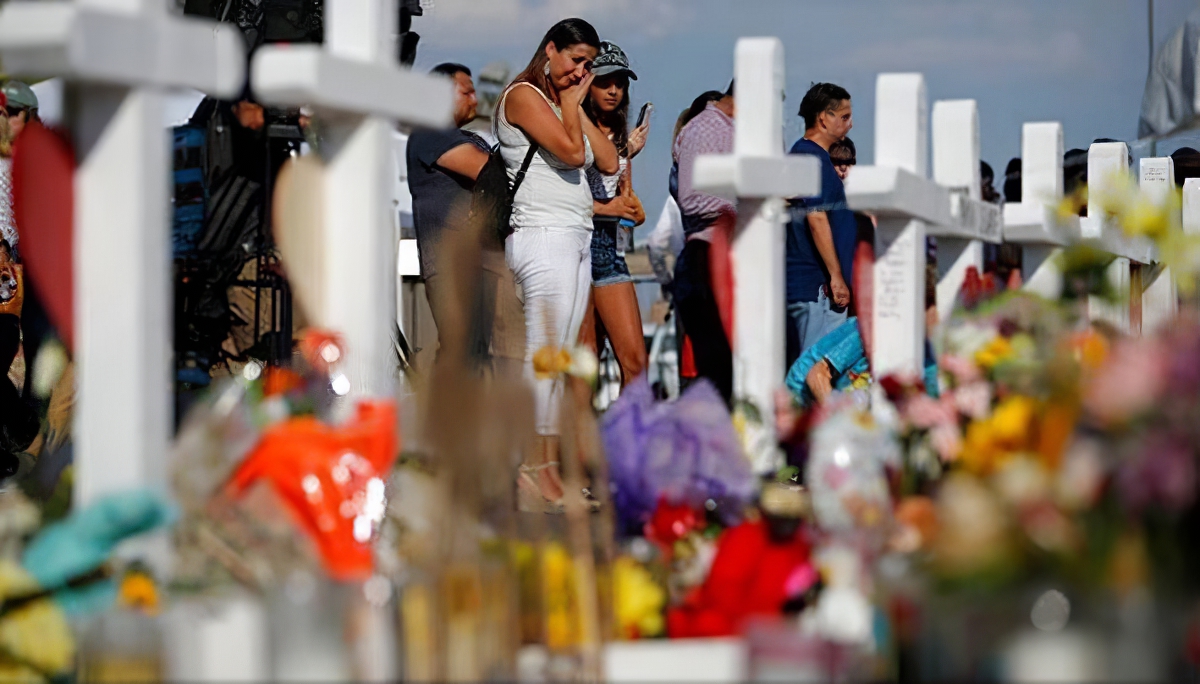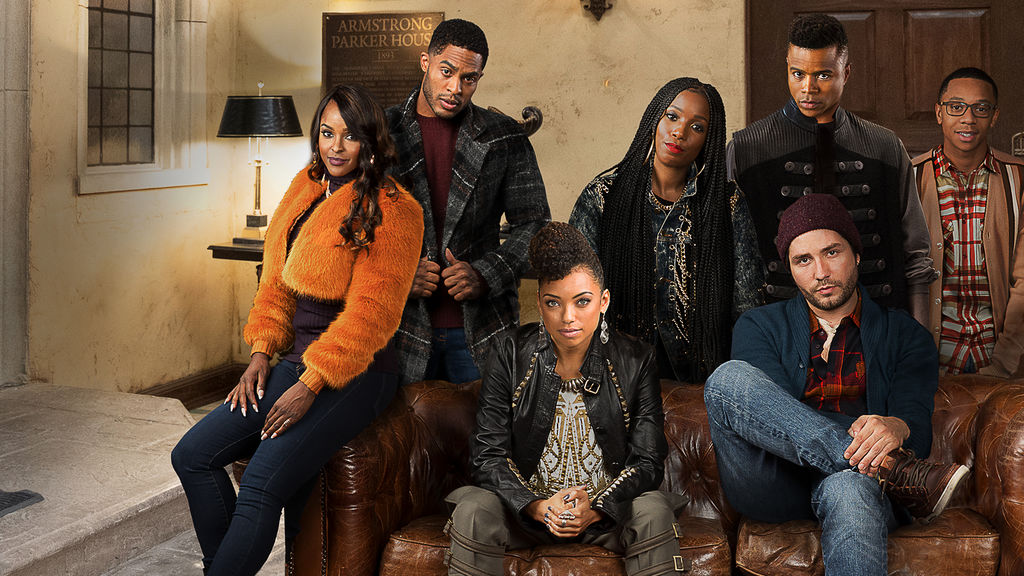Crime
Why I Don’t Live in Fear of White Supremacists
If we start to restrict civil liberties, spread panic and exaggerate the amount of hate and violence in our societies, we will give terrorists what they want: greater control over our political narratives and personal psychology.

The 21-year-old terrorist who attacked an El Paso shopping center on August 3 was a white supremacist who believed that the United States is experiencing a “Hispanic invasion.” He also expressed support for an even deadlier hate crime that had taken place months before: the mosque shootings in Christchurch, New Zealand, in which 51 innocents were killed and another 49 injured. Hate criminals tend to inspire one another. And in the months since the Christchurch slaughter, there have been widespread fears that we may be on the cusp of a new global epidemic of racist killings.
These fears are encouraged by the sense of immediacy that results from the 24/7 social-media coverage of such tragedies, which overwhelms the insulating effects of geography. Immediately following the Christchurch killings, for instance, the Chancellor of University of California, Berkeley, where I am employed, felt required to send an email to all students, staff and faculty condemning the attack, and offering up a suite of mental health and diversity resources for members of the University community—particularly Muslims.
I thanked the Chancellor for her well-intentioned note. But I also told her that I was not going to allow a deranged gunman half a planet away to cause me anxiety or panic. As awful as the attack in Christchurch was, such events are extremely uncommon and unlikely, both in New Zealand and the United States.
According to statistics compiled by the Anti-Defamation League, U.S. domestic extremists killed around 50 people last year, and 37 the year before. In 2016, 72 people were killed. These deaths are tragic and horrifying. But in a country populated by 320-million people, they are not symptomatic of a wave of white-supremacist terror, “spreading like an epidemic across the country,” as one international headline put it.
Following the terror attack in El Paso, Democratic presidential candidate Bernie Sanders pledged to “go to war” against racism. This is the sort of language that was used by George W. Bush following the 9/11 attacks. And even in the aftermath of terrorism that had killed more than 3,000 Americans—two orders of magnitude higher than the current annual U.S. death toll from extremism—it became clear that “war” was a flawed approach to battling hate.
Sanders did not specify what his war on racism would entail. But he seemed to identify a broad set of targets. “My father’s whole family was wiped out by Hitler and his white nationalism,” Sanders told the Young Leaders Conference in Atlanta. “Too many people have fought over the years, too many people have died against racism to let it resurface and flourish in America…We will go to war against white nationalism and racism in every aspect of our lives.”
Genocide is abhorrent. White nationalism is abhorrent. Racism is abhorrent. But the casual conflation of these concepts into a single rhetorical flourish is troubling. When it comes to both law and policy, it’s important to make a distinction between individual bigotry and violent extremism. Experiencing or witnessing ordinary prejudice at some point in your life is quite common in every part on the planet, while experiencing an act of violent extremism motivated by group hatred is highly uncommon.
A 2019 Pew survey found that significant numbers of Americans report hearing friends or family members of their own racial backgrounds make comments or jokes about other groups that would be considered racist or racially insensitive. The numbers varied only slightly depending on the racial group of the respondent. Forty-four percent of blacks said they would often or sometimes hear racially insensitive remarks from friends and family. For whites, the number was 46 percent. If we were going to lump together ordinary prejudice with a predisposition toward violent extremism, we would expect there to be millions of racial terrorists in America. Thankfully, there aren’t.

One byproduct of this conflation of ordinary bigotry and mass murder is a growing campaign to censor offensive content wherever it appears. In the days after the El Paso attack, for instance, Texas Democratic Congressman Beto O’Rourke, a long-shot candidate for the Democratic presidential nomination, called for a change in the law that would make it easier to ensure that social-media companies remove “hate speech and domestic terrorism” from their platforms. He added that “when any one community is targeted, the very idea of America is under attack. That’s why we need to all come together to not only connect the dots between the proliferation of hatred across our country and the acceleration of mass shootings, but actually do something about it.”
A problem is that accusations of “hate speech” come thick and fast on social media, whether the subject is the Middle East conflict, gender politics or immigration policy. The very fact that O’Rourke would use an apples-and-oranges phrase like “hate speech and domestic terrorism” suggests that he hasn’t really thought through the implications of a policy that would link all speech deemed hateful with the apocalyptic spectre of mass murder.
That’s the problem with allowing ourselves to live in fear of terrorists: It makes us react emotionally to crime rather than respond rationally. In the Bush era, this meant declaring metaphorical war on terrorism and literal war on Iraq. Today, it means focusing on a terrifying but marginal phenomenon that cuts down dozens of innocents annually, even as suicide, the 10th leading cause of death in the United States, took more than 47,000 American lives in 2017.
Though it’s hard to appreciate it in the age of Trump, the arc of American history shows we are trending towards greater tolerance, not intolerance. Researchers at Harvard recently used data collected between 2007 and 2016 to show that there has been a dramatic reduction in both implicit and explicit bias about race. The long-term trend is that Americans are getting more tolerant. And there is little that white supremacist terrorists can do about it.
If we start to restrict civil liberties, spread panic and exaggerate the amount of hate and violence in our societies, we will give terrorists what they want: greater control over our political narratives and personal psychology. The killer who murdered those innocent Muslims in Christchurch likely will be sent to jail for the rest of his life. Yet, if he causes me to fear going to a mosque, he would still continue to harm the quality of my life. (One recent survey found that a third of Americans are avoiding some gatherings or public events out of fear of mass shootings.)
We’ve seen this movie before. After the 9/11 attacks, the United States and its allies dramatically ramped up unnecessary overseas conflict, imposed surveillance on domestic populations, and promoted an all-pervasive social fixation with terrorism. The effect was to transform a terrorist movement into a dominant force in geopolitics. On a more banal level, it also spooked American travelers, massively damaged the airline industry, and caused untold millions of children and grandmothers to be subject to invasive and humiliating airport security checks.
Media outlets are part of the problem—though often in a way that runs opposite to what O’Rourke suggests. One study released last year found that the incidence of mass shootings went up after periods of heavy media coverage of previous mass shootings—perhaps because would-be murderers are impressed by the amount of psychological havoc they can create with a single spasm of evil.
CNN, which taught Americans to be paranoid about anthrax two decades ago, has hyped a supposed “school shooting epidemic”—despite the fact that school shootings are actually down since the 1990s. In response to the scare, panicked school officials and politicians have spent millions of dollars on school security theater that is unlikely to help anyone. More children die every year in pool drownings than in school shootings.
To make matters even worse, at least six states now require mandatory school-shooting drills—terrifying experiences for young children. And it’s not even clear these drills actually help students, even at those rare schools where a mass shooting will occur. The killer at Marjory Stoneman Douglas High School in Parkland, Florida, had been through these drills, and planned his 2018 shooting with that experience in mind.
None of this is to suggest that our governments shouldn’t respond to white-supremacist terrorism or school shootings. These are serious policy issues that demand a serious policy response. On a personal level, we also should consistently work to make ourselves, our friends and family more tolerant of those around them: A less racist society is a better society for a multitude of reasons. But there is little sense in allowing panic and fear to govern our lives. It’s trite, but true: Such a response is exactly what terrorists want.
Zaid Jilani, a journalist, is currently on fellowship, studying political and social polarization at UC Berkeley’s Greater Good Science Center. Follow him on Twitter @ZaidJilani.
Featured image: Mourners at a memorial for victims of the August 3, 2019 El Paso shootings.






